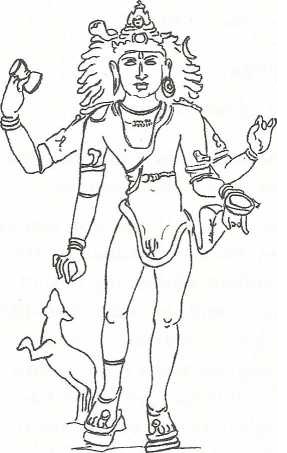Bhikṣatana-murti
By Swami Harshananda
Bhikṣatana-murti literally means ‘image of Śiva in the begging posture’.
Śiva, the last deity of the Trinity, is invariably worshiped as the liṅga. However, several anthropomorphic forms have been attributed to him. One such form belonging to his ugra or raudra (terrific) aspect is the Bhikṣātana-murti or the ‘begging-form’.
The tale behind this form narrates that he cuts off the fifth head of Brahmā, the Creator, with his fingernail since the latter was irreverent. The severed head or skull, however, stuck to his finger and the sin of brahmahatyā incurred thus had to be expiated. So, he had to roam about the earth for 12 years, begging for food in the skull-cup. This form is known as the ‘Bhikṣāṭana-murti.’ As soon as he entered Vārāṇasī (Kāśī or Banaras) he was freed from this sin.
In iconographical works the Bhikṣātana-murti is shown as a naked person with matted hair wearing a white yajñopavīta or sacred thread, the skull-cup sticking in his hand and pādukās[1] on his feet. Sometimes a snake is wrapped as a waist-band and upper cloth of deerskin and some ornaments may also be shown.
Images of this Bhikṣāṭana-murti are quite popular are found in all the major temples in South India. Bronze icons are also sometimes seen kept in some temples.
References[edit]
- ↑ Pādukās means wooden sandals.
- The Concise Encyclopedia of Hinduism, Swami Harshananda, Ram Krishna Math, Bangalore

